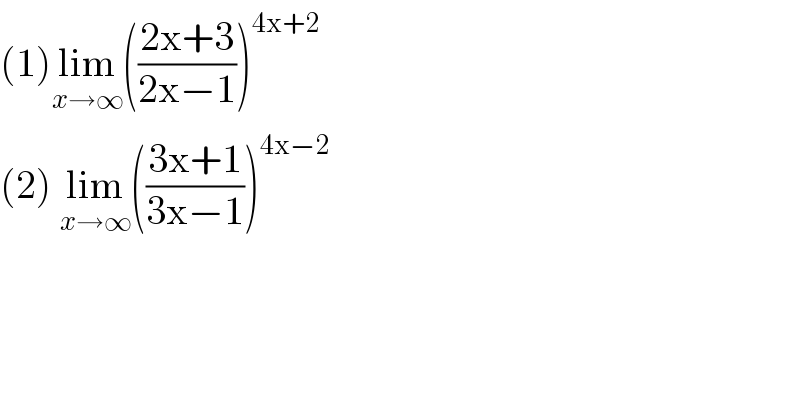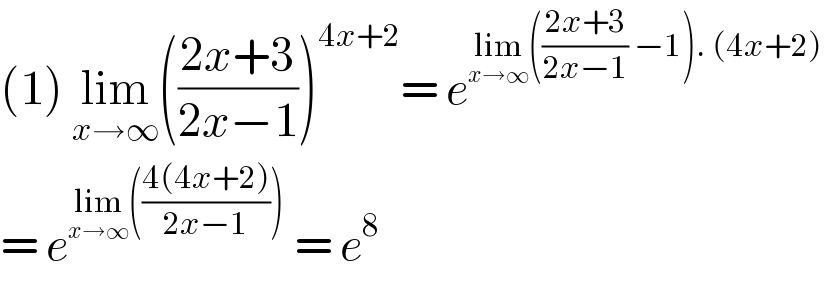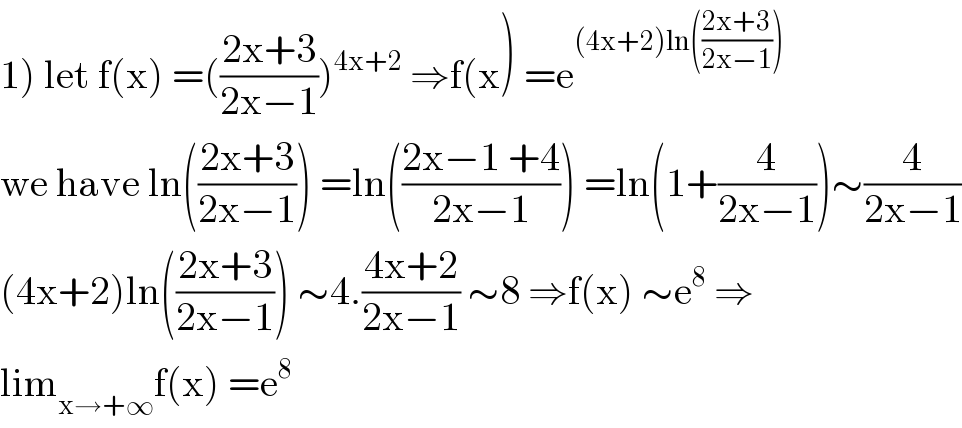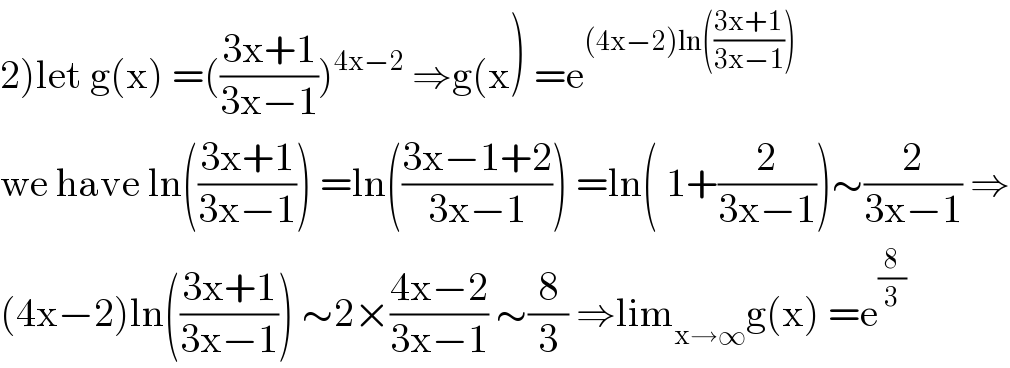
Question and Answers Forum
Question Number 112863 by bemath last updated on 10/Sep/20

Commented by bobhans last updated on 22/Sep/20

Answered by bobhans last updated on 10/Sep/20
![lim_(x→∞) (((3x−1+2)/(3x−1)))^(4x−2) = lim_(x→∞) (1+(2/(3x−1)))^(4x−2) let u = (2/(3x−1)), u→0 and 3x−1 = (2/u) x = ((2+u)/(3u)) . then lim_(u→0) (1+u)^(((4u+8)/(3u))−2) lim_(u→0) [(1+u)^(1/u) ]^((8−2u)/3) = e^(lim_(u→0) (((8−2u)/3))) = e^(8/3)](Q112864.png)
Answered by bobhans last updated on 10/Sep/20
![lim_(x→∞) (((2x−1+4)/(2x−1)))^(4x+2) =lim_(x→∞) (1+(4/(2x−1)))^(4x+2) let q = (4/(2x−1))→x = ((4+q)/(2q)) lim_(q→0) [(1+q)^(((8+2q)/q)+2) ]= lim_(q→0) [(1+q)^(1/q) ]^(4q+8) = e^(lim_(q→0) (4q+8)) = e^8](Q112865.png)
Answered by mathmax by abdo last updated on 10/Sep/20

Answered by mathmax by abdo last updated on 10/Sep/20

